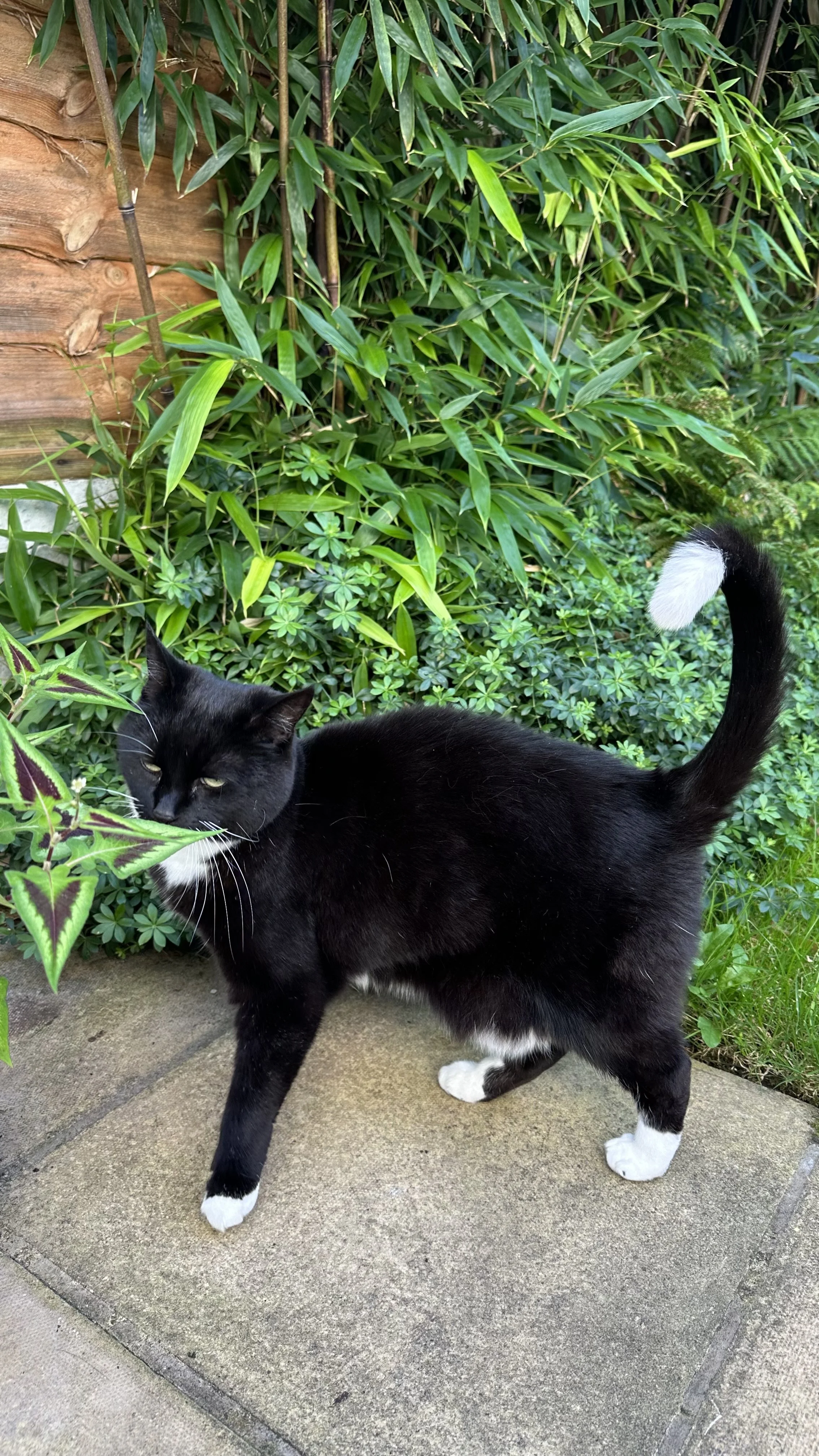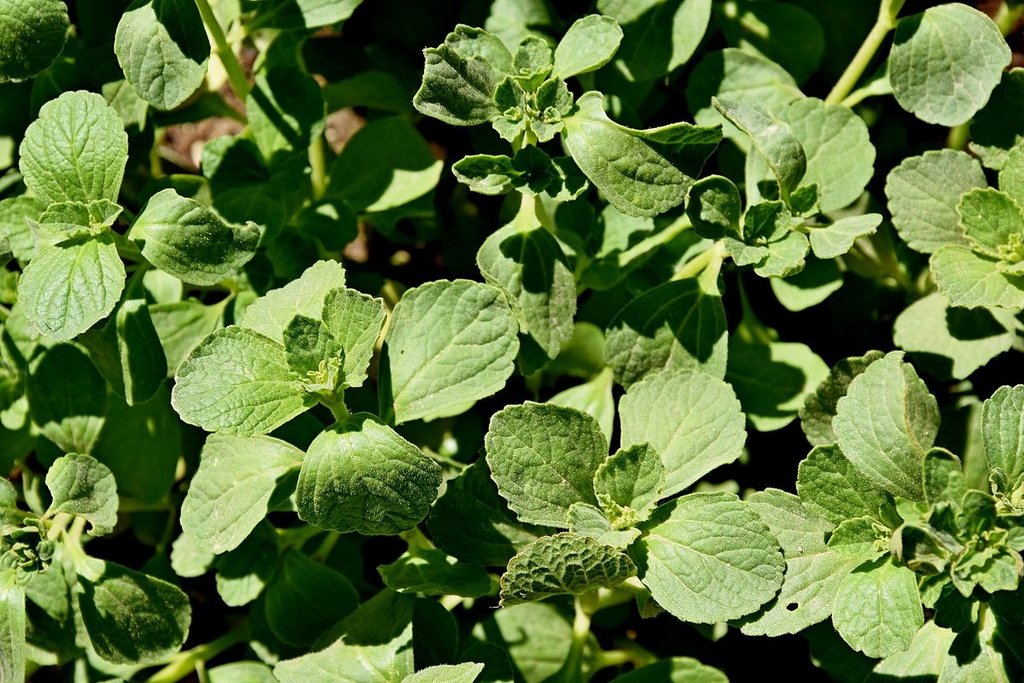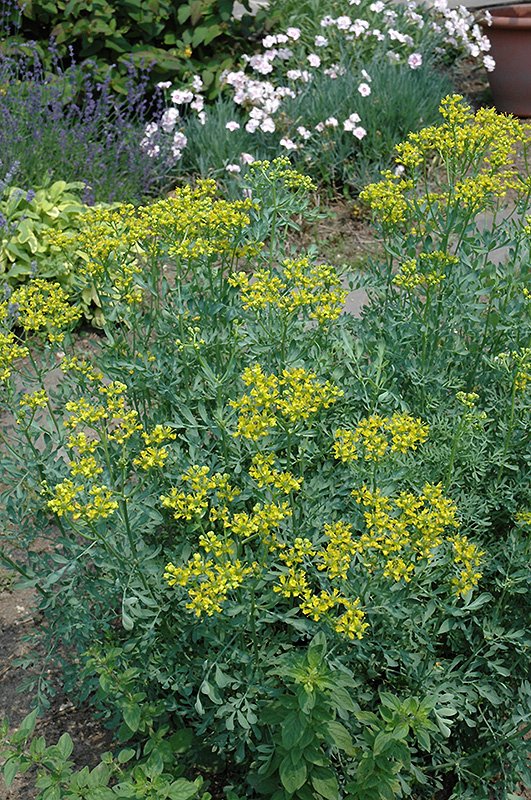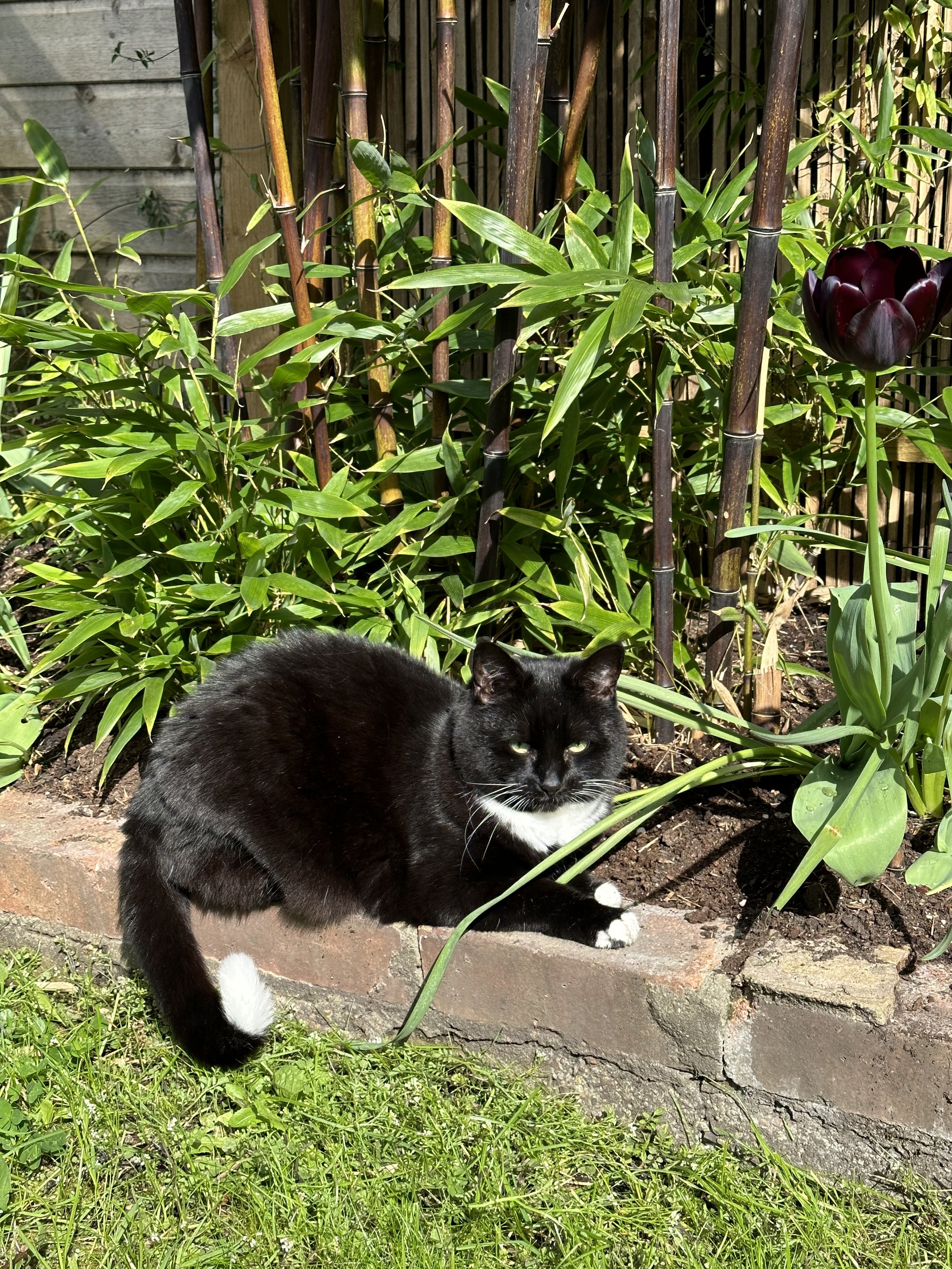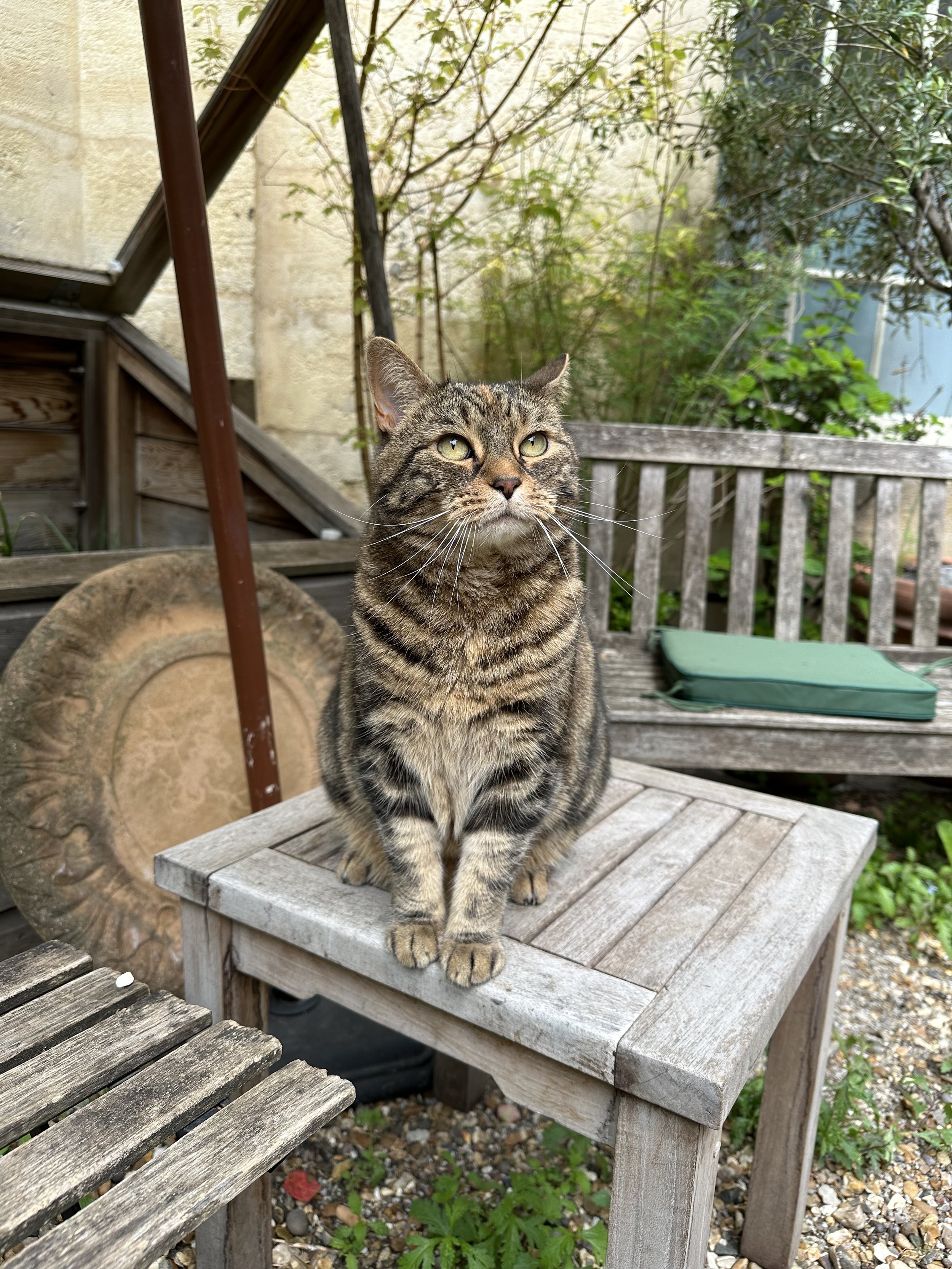Plants That Deter Cats: A Natural Solution to Keep Cats at Bay
This article has links to products that I may make commission from.
Have you ever wondered, "What repels cats from my flower and garden beds?" If you're on the quest for effective cat deterrents, one answer might surprise you - plants.
Yes, there are plants that deter cats naturally.
Some homeowners might be worried about how to stop cats from pooping in the garden, or how to keep cats away from outdoor plants.
In this post, we'll explore the plants and spices that repel cats and provide an eco-friendly solution to these common woes.
For more sustainable garden solutions, check out my guides:
Understanding Cats and Plants
Cats, in all their playful and curious glory, have a complex relationship with the world around them.
This is especially true when it comes to plants.
It's essential to note that cats are carnivores by nature, but they still interact with plants in various ways.
Cats may nibble on grass, for instance, to aid in digestion or to help dislodge any fur in their stomachs.
However, their interactions aren't always innocuous.
Sometimes cats will dig in the soil of potted plants, damaging the roots and overall health of the plant.
They might also use garden beds as their litter box, which is not only a nuisance but can also be harmful to certain plants.
Cats have a heightened sense of smell which can be thousands of times more sensitive than that of humans.
They use their keen sense of smell for communication, hunting, and discerning their surroundings.
Consequently, they are especially sensitive to strong odors.
Aromatic plants often have oils and compounds that cats find irritating or unappealing.
This dislike for certain scents forms the basis for the concept of cat repellent plants.
Some plants emit odors that are repugnant to cats but pleasant or neutral to humans.
This makes these plants an excellent natural deterrent for cats.
Strategically placing these plants around your garden or home can create an invisible barrier that keeps cats away without causing them harm.
It's an effective way to maintain a beautiful garden while also keeping your local feline friends at bay.
It's important to note, though, that not all plants are cat-friendly.
Some plants can be toxic to cats when ingested, causing symptoms like vomiting, diarrhea, or more severe health issues.
Therefore, while it's important to choose plants that can deter cats, it's equally crucial to ensure that these plants won't harm cats if they do decide to take a bite.
In the next sections, we'll delve into specifics about plants that are safe for cats but can deter them effectively due to their strong scent profiles.
Check out my guide: The Best Gardening Books for Beginners.
Plants That Repel Cats
When considering what plants repel cats, you have a few different options.
Let's take a closer look at some of the most effective plants:
Coleus Canina (Scaredy Cat Plant)
Known colloquially as the Scaredy Cat plant, Coleus Canina is a member of the mint family.
This fast-growing, perennial plant is often used as a natural deterrent for cats, dogs, and even foxes, making it a popular choice for homeowners and gardeners who want to protect their gardens from these animals.
The Scaredy Cat plant is native to Africa and South Asia, and it thrives in areas with full sun, like a south-facing garden, and well-drained soil.
It grows up to two feet tall, with beautiful blue or purple flowers that bloom in the late summer.
Its green, serrated leaves might look harmless, but they emit a strong smell that cats (and some people) find unpleasant.
Interestingly, humans usually can't detect this odor unless the leaves are touched or bruised.
But to cats, whose sense of smell is far more acute than ours, the aroma is apparent and offensive even without any physical contact.
As such, simply planting Coleus Canina in and around your garden can serve as an effective deterrent for cats.
Caring for a Scaredy Cat plant isn't too demanding. They prefer a sunny spot but can tolerate partial shade.
They need well-drained soil, so if you're potting them, ensure there's adequate drainage.
Water them regularly, but take care not to overwater, as this can lead to root rot.
During winter or in frost-prone areas, it's advisable to bring your Coleus Canina plants indoors or protect them with a frost cloth.
Even though the Scaredy Cat plant is an excellent deterrent for cats, it's important to note that it's non-toxic to cats.
So, if a particularly brave or curious cat were to eat part of the plant, it wouldn't cause anything more than perhaps a mild upset stomach.
Here is the Coleus Canina I recommend growing:
Curry Herb Plant (Helichrysum italicum)
The Curry Herb Plant, scientifically known as Helichrysum italicum, is a small perennial shrub that is part of the sunflower family.
Native to the Mediterranean, it's commonly known as the Curry Plant because of its strong, curry-like fragrance.
However, it should not be confused with the curry leaf plant (Murraya koenigii) used in Indian and South Asian cuisine, as they are two distinct species.
The Curry Herb Plant is a sturdy, drought-resistant plant that thrives in sunny, well-drained locations.
It can reach a height of up to 24 inches and has silvery-grey leaves, which add a touch of brightness to your garden.
The plant blooms in the summer, producing small, yellow flowers that further enhance its visual appeal.
The Curry Herb Plant's potent aroma, while delightful and savory to humans, acts as a deterrent to cats.
Cats possess a highly sensitive sense of smell, and the Curry Herb Plant's strong, pungent odor can be off-putting for them.
This makes the Curry Herb Plant an excellent, natural cat repellent for gardens and flower beds.
In terms of care, the Curry Herb Plant is relatively easy to maintain. It prefers full sun and doesn't require rich soil.
Regular watering with good drainage is ideal, but as a drought-tolerant plant, it can also withstand periods of dryness.
Pruning in the spring can help keep the plant compact and encourage bushier growth.
Despite its name, the Curry Herb Plant is not typically used in cooking due to its intense flavor and slightly bitter aftertaste.
However, it has found use in herbal medicine and is often included in lotions and salves for its potential anti-inflammatory properties.
Here is the Curry Herb plant I recommend growing:
Lemon Thyme (Thymus citriodorus)
Lemon Thyme, scientifically known as Thymus citriodorus, is an aromatic perennial herb famous for its citrusy scent and flavor.
A member of the mint family, this delightful plant is a popular choice in many herb gardens, and for a good reason.
Its small, delicate leaves pack a punch of lemony flavor that is loved in many culinary circles, and its pretty pink or purple flowers make it an attractive addition to any garden.
Like its name suggests, Lemon Thyme emits a strong lemon scent, which is a result of its high essential oil content.
While this citrusy aroma is refreshing and pleasant to humans, it can be quite repelling to cats.
Cats have a much more sensitive sense of smell than humans, and strong fragrances, even those pleasing to us, can be overwhelming to them.
Lemon Thyme thrives in well-drained soil and full sun but can tolerate partial shade.
It's a hardy plant that can withstand drought conditions, making it an easy-to-maintain addition to your garden.
This plant usually grows up to 10-12 inches tall and spreads around 12 inches wide, making it a good ground cover plant as well.
To care for Lemon Thyme, water it regularly but ensure that it doesn't sit in waterlogged soil as it could lead to root rot.
Pruning after the flowering period can help maintain its shape and promote growth.
In terms of culinary use, Lemon Thyme is a versatile herb. Its unique flavor profile is a welcome addition to a variety of dishes, including chicken, fish, salads, and even desserts.
The leaves can be used fresh or dried. However, fresh leaves are often preferred for their stronger flavor.
Lemon Thyme not only adds beauty and a mouth-watering aroma to your garden, but its strong lemony scent also serves as a natural cat deterrent.
It's a winning combination that makes Lemon Thyme a worthwhile addition to any garden.
To learn more about herb gardening, check out my guide How to Start a Raised Bed Herb Garden.
These are the Lemon Thyme plants I recommend planting:
Common Rue (Ruta graveolens)
Common Rue, known scientifically as Ruta graveolens, is a robust perennial herb native to the Balkan Peninsula.
It's a member of the Rutaceae family, which also includes citrus trees.
Often referred to as "Herb-of-grace" in literature and folklore, it has been utilized over the centuries for various purposes, including culinary, medicinal, and religious rituals.
Growing up to 2-3 feet tall, the Common Rue plant is quite an eye-catcher with its bluish-green foliage and sunny yellow flowers that bloom in the summer.
It has a bushy growth habit, with leaves that are pinnately divided into round-tipped segments, creating a beautiful feathery appearance.
One of the striking characteristics of the Common Rue plant is its pungent aroma.
Some people describe it as a combination of bitter and spicy, while others find it altogether unappealing.
For cats, this smell is particularly distasteful.
As a result, Common Rue serves as an effective cat deterrent, helping to keep cats away from garden beds and other areas where they might not be desired.
Common Rue is a hardy plant that prefers full sun but can tolerate partial shade.
It grows best in well-drained soil and has a high drought tolerance, making it suitable for rock gardens and xeriscaping.
Care for this plant involves regular watering but avoiding waterlogged conditions.
You can prune it back in late winter or early spring to encourage new growth and maintain its shape.
While the plant is an excellent natural cat deterrent, it's essential to handle it with care.
The plant's sap can cause skin irritation in some individuals, especially when exposed to sunlight.
It's also crucial to note that while Common Rue was used in traditional medicine, it should not be ingested in large quantities as it can be toxic.
Its bitter taste usually deters animals and humans from eating it.
In conclusion, the Common Rue plant, with its strong aroma and hardy nature, makes a valuable addition to gardens, serving both aesthetic and practical purposes.
Here are the Common Rue seeds I recommend planting:
Lavender (Lavandula)
Lavender, belonging to the genus Lavandula, is one of the most popular and widely recognized plants due to its strikingly beautiful purple flowers and its distinct, soothing fragrance.
Originating from the Mediterranean, Middle East, and India, lavender has been used for centuries for its culinary, medicinal, and ornamental purposes.
Lavender plants are perennial and evergreen, growing to about 1 to 2 feet tall.
They produce iconic spikes of purple flowers in late spring to early summer, which not only add vibrant color to gardens but also attract a variety of pollinators like bees and butterflies.
Learn more about lavender with my guides:
One of the key characteristics of lavender is its strong fragrance, which has a calming effect and is often associated with relaxation and sleep.
However, this same pleasant smell can be overwhelming to cats.
Their acute sense of smell finds the scent of lavender off-putting, making lavender an effective natural deterrent for cats.
Lavender thrives in full sun and prefers well-drained soil.
It is drought-tolerant once established, making it suitable for rock gardens or xeriscaping.
However, it does not fare well in waterlogged conditions, so it's essential to avoid overwatering.
There are numerous varieties of lavender, but if your primary purpose is to deter cats, the 'Munstead' variety is often recommended as it has a particularly strong scent that cats dislike.
In addition to being a cat deterrent, lavender has several other benefits. In the culinary world, it's used to add a unique flavor to dishes like salads, jellies, and even cookies.
The essential oil derived from lavender flowers has been used in aromatherapy for its soothing properties.
Furthermore, lavender's antiseptic and anti-inflammatory properties have made it a popular ingredient in skincare and healing salves.
While lavender is non-toxic to cats, ingestion in large amounts may cause nausea and vomiting due to the strong essential oils.
Hence, while it can deter cats, it won't harm them if they happen to nibble on it.
Learn how to propagate lavender from cuttings in our guide How to Take Lavender Cuttings: A Step-by-Step Guide.
Here is the lavender I recommend growing:
Rosemary (Rosmarinus officinalis)
Rosemary, known scientifically as Rosmarinus officinalis, is a perennial evergreen shrub native to the Mediterranean region.
Known for its fragrant needle-like leaves and delicate blue flowers, it's a popular plant in many herb gardens and landscapes worldwide.
Growing up to 1-2 meters tall, rosemary is a hardy plant that can thrive in a variety of conditions.
However, it prefers well-drained soil and full sun exposure.
It's also resistant to drought, making it a relatively low-maintenance plant that's ideal for gardeners looking for an easy-to-care-for addition to their gardens.
Learn more about How to Propagate Rosemary.
Rosemary is most renowned for its distinct fragrance, which is rich, herbaceous, and slightly reminiscent of pine.
While this aroma is loved by many people and used extensively in cooking, it can be overwhelming to cats.
Cats have a much more sensitive sense of smell than humans, and the strong scent of rosemary can act as a natural deterrent, helping to keep cats away from garden beds or specific areas of your yard.
To learn more about growing rosemary, check out my guide Rosemary Companion Plants.
Aside from its use as a cat deterrent, rosemary has a myriad of other applications.
In the culinary world, rosemary is a staple herb in many types of cuisine, enhancing dishes with its bold flavor.
The plant is also rich in antioxidants and anti-inflammatory compounds, making it a beneficial addition to various medicinal and wellness applications.
Furthermore, rosemary essential oil is widely used in aromatherapy and skincare for its potential benefits.
Although rosemary's scent can deter cats, it's important to note that the plant is non-toxic to cats.
Ingestion might lead to mild gastrointestinal upset due to the strong oils, but it doesn't pose a significant threat to their health.
Here is the rosemary I recommend growing:
Using Essential Oils
Essential oils are concentrated liquids containing volatile aroma compounds from plants.
They're obtained through several extraction methods, the most common being steam distillation, and are used in aromatherapy, personal care products, and other health-related applications due to their potential therapeutic benefits.
In the context of deterring cats from gardens or specific areas in the home, some essential oils can be quite effective due to their strong aromas.
Cats have a much stronger sense of smell than humans, so they can find these strong odors overwhelming or unpleasant.
Oils like lavender, rosemary, lemon, or citronella are often used to repel cats.
However, while these oils can act as deterrents, it's important to use them safely and appropriately.
Here are some guidelines:
1. Dilution is crucial:
Essential oils are extremely potent and can cause skin irritation or other adverse reactions if used undiluted.
Always dilute essential oils with a carrier oil (like coconut or jojoba oil) or water before use.
2. Avoid direct contact:
Do not apply essential oils directly to a cat’s skin or allow them to ingest it.
Many essential oils are toxic to cats when ingested or absorbed through the skin.
If you're using essential oils in an area where your cat may have access, make sure it's in a way that prevents direct contact.
3. Start small:
Start with a small amount of diluted oil and observe your cat's reaction.
What works as a deterrent for one cat might not work for another, so it's essential to monitor their behavior and adjust accordingly.
4. Indoor use:
When using essential oils indoors to deter cats from certain areas, consider using a diffuser.
The dispersed oil can help keep cats away from specific zones without causing harm.
5. Outdoor use:
For outdoor use, consider soaking cotton balls in the diluted essential oil and placing them around the perimeter of the area you want to protect.
Remember, not all essential oils are safe for pets, and what may work as a deterrent for cats could be harmful to other pets. Always research and consult with a vet before introducing a new substance into a pet-friendly environment.
How to Utilize These Plants in Your Garden
Strategically using plants that deter cats in your garden can help maintain its beauty while keeping unwanted feline visitors at bay.
Here are some tips on how to make the most out of these plants:
Define Boundaries
Planting these cat-repellent plants around the edges of your garden or specific areas you want to protect, like vegetable patches or flower beds, creates a natural barrier that cats are likely to avoid.
Use Them in Pots
If you need to protect a specific area in your garden, consider planting these herbs in pots.
This allows for easy mobility, and you can place the pots strategically to deter cats from those regions.
Create a Dedicated Area
If you have cats and want to keep them away from certain areas, create a dedicated space in your garden just for them.
You can plant cat-friendly plants like catnip or cat grass in this area to attract your cats, while planting deterrent plants around areas you want them to avoid.
Mix Them In
Cats may attempt to dig in bare soil or mulch. If you intersperse your garden beds with these plants, it will make those areas less attractive to cats.
Layer Your Planting
If you have a larger space to work with, consider creating a layered planting scheme.
Taller plants like rosemary and lavender can be planted at the back, with shorter plants like lemon thyme and curry herb plant at the front.
This not only helps create a fuller garden look but also maximizes the area covered by the deterrent.
Make the Most of Aromas
Some of these plants release their smells when touched. Planting them close to where people walk can help release these scents and make the area less appealing to cats.
Companion Planting
Some of these cat deterrent plants also make good companion plants for various vegetables and flowers due to their insect-repelling properties.
For example, rosemary can be planted alongside beans and cabbage, while lavender goes well with roses and cabbages.
Regular Maintenance
Make sure to take care of these plants so they remain healthy and potent.
This includes regular watering (though be careful not to overwater), plenty of sun, and good soil conditions.
Pruning may be needed for some plants to ensure their continued growth and to maintain their shape.
Remember that while these plants can deter cats, they are unlikely to cause them harm, making them a safe and natural solution for keeping cats out of your garden.
Navigating the dynamic world of plants and cats, we've discovered how nature offers a paw-friendly way to keep our furry friends at bay.
With a keen understanding of the plants that cats hate, we can create an outdoor space that's harmonious for everyone.
Among the array of flowers that repel cats, we've explored the potent Coleus Canina, the aroma-rich Curry Herb Plant, the sun-loving Lemon Thyme, and the robust Common Rue.
We've also recognized the potential of well-loved herbs like Lavender and Rosemary.
Whether planted in your garden beds or potted on your patio, these plants offer a natural, safe way to maintain your garden's tranquility.
Moreover, understanding how to use these plants effectively in our gardens can make all the difference.
It's about striking a balance between keeping your cherished flower beds safe from curious paws, and offering a dedicated space for our feline friends to enjoy.
In the end, the goal isn't just about finding plants to keep cats away, but nurturing an environment where flora and fauna can coexist peacefully.
Embrace the elegance of these cat-deterring plants, and you'll find that they offer not just a solution to the cat dilemma, but also a valuable addition to your garden's aesthetic and functionality.

